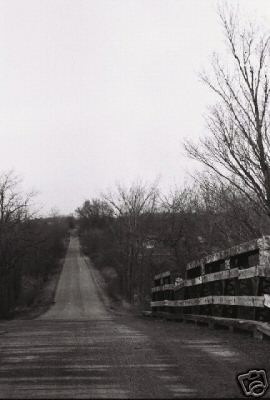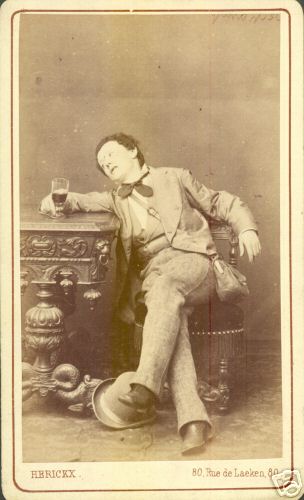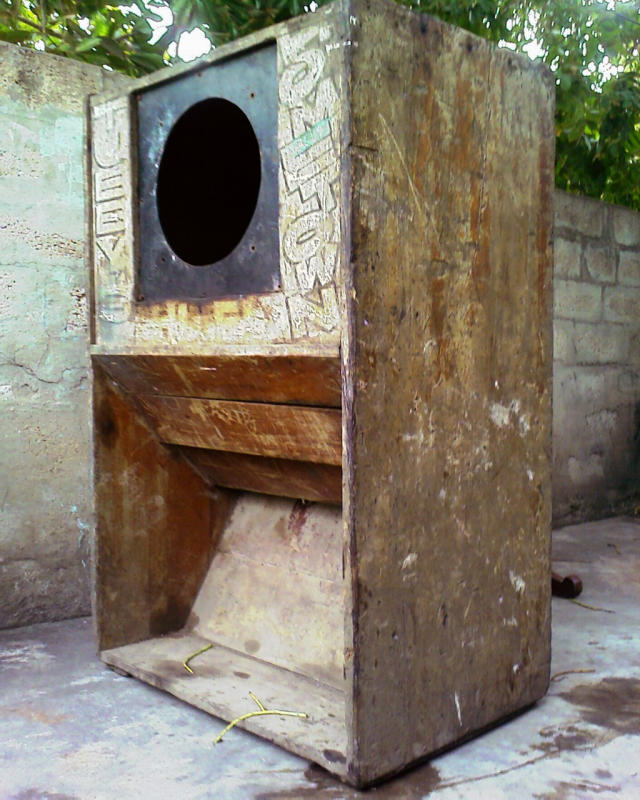Schwarz
View current page
...more recent posts

If Rudolph’s buildings aren’t as highly valued as those of some of his contemporaries, that’s in part because they aren’t as well understood. But it isn’t difficult to become familiar with Rudolph’s prodigious output. In a Rudolph-themed road trip last month, with New York as a base, I was able to see nearly a dozen of his buildings in three days.

This Saturday night, you could win a classic mid-century modern Herman Miller chair and at the same time help raise funds to save from demolition a classic mid-century modern beach house by Long Island architect Andrew Michael Geller.my previous postings on the pearlroth house. thanks to google news alert i received this short notice cry for help. i cant believe the pearlroth estate (always with the threat of immediately pending demolition!), please read on, its a horror story. save the
Design Within Reach Studio at 30 Park Place in East Hampton will host a silent auction and raffles from 7 to 9 p.m. to raise the money needed to move the acclaimed Pearlroth House from 615 Dune Rd. in Westhampton Beach to public land five miles farther east on Triton Beach. Built in 1959, its double-diamond shape has been compared to a box kite and a square brassiere, and is widely acclaimed by architects, critics and historians as an influential example of the Hamptons' innovative and witty - and fast disappearing - post-World War II beach house architecture.
The heirs to the Pearlroth House will demolish it unless it can be moved before the spring building season. Current regulations would make it impossible to renovate it as a dwelling without substantially changing it, and its owner offered to donate the 600-square-foot house to the architect's grandson, filmmaker and historian Jake Gorst. He and fellow preservationists say they'll need about $200,000 to relocate and restore the structure, which they hope will house a museum of mid-century architecture at its new site.
For more information about the Saturday fundraiser, which will feature a slide presentation, wine and cheese, as well as the silent auction - and to learn how to make a donation - call Gorst at 631-651-9939.
Are the curvaceous glass forms of the IAC headquarters building, evoking the crisp pleats of a skirt, a bold departure from Manhattan’s hard-edged corporate towers? Or are they proof that Mr. Gehry’s radical days are behind him?
photo group
brownstoner (if for no other reason than the negative comments)
mies van der rohe’s tugendhat house brno, czech republic
From the outside, the Tugendhat House doesn’t look like one of the most important residential buildings of the 20th century: it’s just two white stucco cubes separated by an opening through which a few spiky treetops protrude. But as a tour guide led a group of 10 through this modern home in the Czech Republic’s second-largest city in early March, it was clear that there was much more to the house, the bulk of which is built on the steep hillside that drops away from the street.
WFRT
via vz
Urban density makes sustainable cities possible. The more closely together we live, the more we share amenities, and the less space we take up for our personal needs, the smaller our collective footprints become. But getting more compact means changing the commonly accepted correlation between McMansions and good living.
The Japanese lead the way in proving the benefits of small spaces. By virtue of long-held tradition and the necessity of finding comfort in populous cities like Tokyo, designing homes for tiny in-between spaces has become a modern art.
heres my ny story from earlier today:
doing pickup truck moving job for friend tom w. and unknowingly droped cell phone in street making 1st pickup on w 39th street. heading over 59th street bridge tom g gets call from person who found the phone. they went into the memory and redialed the last made call (me to tom coordinating 1st pickup). he said were in queens and would be back in the city in 1 1/2 hours and that wed call him back then. caller said he worked at broadway and 38th street. i gave tom 20 bucks when we got to the address and he jumped out and took the elevator to the 21st floor. the caller was a male asian receptionist in the garment industry. he was happy to get the $ and i was happy when tom came back with my phone. wooo-dy wooo-hoo
Carbonnier's Inuksuk Residence
This is not the first book to describe this period of radical musical change and social "revolution". Several books have been written by some of the protagonists of the London hippy scene of the mid/late 60's - e.g. Richard Neville (him again) now wealthy back in Oz, Mick Farren describing The Social Deviants (and Pink Fairies) and International Times, 'Lost In the Woods' a biography of Syd Barrett and the rise of Pink Floyd, 'Out-Bloody-Rageous' the Soft Machine biography. Now here Anglo-American record producer Joe Boyd has come up with a most readable gem of an autobiography, concentrating largely on the period 1964 to 1971. The book's title 'White Bicycles', refers to the white bicycles frequently seen then in the Netherlands, (which were for anybody to use - echoing the intended freedom to share 'each other's goods, plough each other's earth', and the related hippy ethos), and of course the hit by one of the first bands he managed, Tomorrow.boyd with terry gross on fresh air / another book review
Boyd relates how he fell into the music business, discovering a long forgotten blues singer was happy to do a gig at a Harvard Uni student hall for 25 dollars as long as he got a ride to the show. Boyd had a whip round taking a dollar each from everybody who attended, and so was able to give the musician a 75 dollars bonus. Then the summer jobs working for record labels. Or acting as goffer at the Newport Jazz & Folk Festival in 1965, when he claims rock came about i.e. when Dylan brought his electric folk band on stage with Mike Bloomfield and Al Kooper in that line-up, so shocking the folk purists such as Pete Seeger, that they walked out of the Festival. Then road managing ancient blues singers around Europe. The love affair with the UK, after Boyd talked himself into a scouting job for talent for Elektra Records, for example claiming how close he was to grabbing Floyd for the label. Discovering Sandy Denny and Fairport Convention, and then getting Denny into the band. Being stunned by Nick Drake's demos and then being more stunned that nobody bought Nick Drake's records when first released - although when John Cale asked Boyd who was new, on hearing a work-in-progress tapes for '5 Leaves Left', Cale went straight round to Drake's digs, sorted out a couple of tunes, then they recorded these together the following Monday. The rise and fall of the Incredible String Band.
sellersville theater, sellersville buks co pa
upcoming : Alejandro Escovedo, Leon Russell , Dick Dale, Gram Parker.
A little over a year ago I did this post about this blog I had come across by a guy named Hanszun that I was surprised to see was giving away lots of complete, in-print CDs (including box sets), instead of the ultra-rare out-of-print stuff usually made available by most "sharity" sites. I said that "Blogs like this Hanszunblog (not to pick on him- I'm sure there are hundreds more) are going to be the death of music blogs and are going to bring the wrath of the RIAA down on ALL of us". This led to a bit of a flame-war in my comments which I finally shut down when some guy threatened to contact Arthur Lee who he had "had some correspondence with a bit in the past, and have his email address" to report me for posting some Love videos because I had "pushed a good friend of mine just a little too far."
look, i like getting lectured in between cuts by experts in their musical fields. thats why last night (not his regular time slot) i listened to phil schaap yang on in a single show history of jazz. one show but there was still time for an exhaustive discussion on king oliver, louis armstrong and new orleans. my terrestrial reception wasnt cutting it so i checked and wkcr columbia univ does have a website with online streaming. with further exploration i found phil schaaps selected archives with in depth focuses on louis armstrong, bix beiderbecke and ornette coleman. im going to guess and say the mlk show is a in depth general history of jazz. schaap is very very knowledgeable on his subject and the shows come off as scholarly lectures. even repetitive playing of the same song pointing out the different solos and band members proformances, dates, location, etc.
i put a "john cage" search into radio365 and i got radiomolecule which boasts the following descriptive information :
Acoustic explorations.
The Best in Classical-Modern, Avant Garde and Experimental.
20th Century Serial and Atonal music; Musique Concrete; Cage's Chance Music; Minimalism; Field Recordings; Olivero's Deep Listening soundscapes from underground caves; Sound Art in general or just about anything 'audible' that might be good.
Works by George Antheil, Henry Cowell, Elliott Carter, Sofia Gubaidulina, John Cage, Terry Riley, John Adams, Olivier Messiaen, Morton Subotnick and more.
New Music from the 20th and 21rst Centuries.
will the commercial interruptions be too frequent and will the programing be too repetitive? very good programing and cd quality stream could justify a vip subscription.

It's been more than twenty-five years since Tom Wolfe became America's most widely read architecture critic with his 1981 best-seller, From Bauhaus to Our House, perhaps the most ill-informed book ever written about architecture. Time has dimmed neither its splenetic malice nor joyful ignorance, but what about the 75-year-old Wolfe himself? To find out, I went up to Columbia University recently to hear him participate in a symposium on New York City architecture.the november '06 nyt opinion piece
To get along in life, everybody needs pretty much the same thing — but not exactly the same thing.
That's the problem given historical shape by "Modernism: Designing a New World, 1914-1939," the vast, thought-provoking show opening Saturday at the Corcoran. It touches on virtually every art form, from drawing and painting to cinema and dance. But because the show originated at the Victoria and Albert Museum, one of the world's great repositories of design and decorative arts, the more populist media — architecture, design, graphic art — resonate loudest.

via the fmu blog
...............................

e-cube house via justin
if you are familar with the maysle brothers documentary Salesman, then you may remember the location ali-baba avenue in opa-laca florida. its just a little north and west of miami. i know it personally because i worked for my uncle who had a fishing tackle manufacturing company there summer '73.
opa-laka is in the nyt today, they're boarding-up city hall :
Where the scrub palmetto once grew wild, Opa-locka has languished as a violent, drug-addled void on a cartoon stage set, one fantasyland too many in an oversubscribed state. Beneath a film of dust, a suggestion box at City Hall holds a single blue slip that says, “The best suggestion would be more police.”via vz
For rehabilitation, the city has turned time and again to promoting the legacy of its architecture, a peculiar homage to Moorish antiquity that includes 20 buildings on the National Register of Historic Places. Down streets called Sesame, Aladdin and Caliph, archways and turrets are adorned with brilliant mosaics and muted flowers in bas-relief.
But now even the fantasy’s veneer is crumbling. Pronouncing City Hall’s roof unsound, the walls moldy and the rats intolerable, the City Commission voted last month to move to rental space in a new four-story office building most vividly described as rectangular.
Many years ago Meyer Schapiro argued that there was a radical difference between art’s spiritual value and its commercial value. He warned against the nihilistic effect of collapsing their difference. I will argue that today, in the public mind, and perhaps in the unconscious of many artists, there is no difference. The commercial value of art has usurped its spiritual value [i would say use value], indeed, seems to determine it. Art’s esthetic, cognitive, emotional and moral value -- its value for the dialectical varieties of critical consciousness -- has been subsumed by the value of money.
Art has never been independent of money, but now it has become a dependency of money. Consciousness of money is all-pervasive. It informs art -- virtually everything in capitalist society -- the way Absolute Spirit once did, as Hegel thought. Money has always invested in art, as though admiring, even worshipping, what it respected as its superior -- the true treasure of civilization -- but today money’s hyper-investment in art, implicitly an attempt to overwhelm it, to force it to surrender its supposedly higher values [thus neutralizing all art and artists functioning in service to the system], strongly suggests that money regards itself as superior to art.
ohio or pennsylvania house construction photo series
